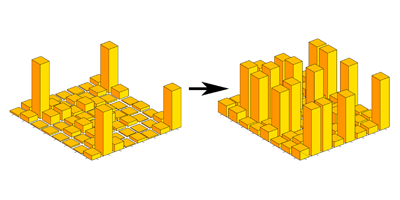Hitting Reset After a Quantum Measurement
Measuring a quantum object singles out a quantum state from a set of possible states. The process is irreversible, since the object retains no information about its premeasurement uncertainty. However, a group of physicists have devised a kind of “data recovery” process based on error correction techniques used in quantum computing. As described in Physical Review Letters, they measured one part of an entangled quantum system and then used the other, unmeasured part to reset everything to the preobserved state.
In a quantum computer, the unit of information is a qubit that exists in two states, “zero” and “one,” at the same time. This superposition is not directly observable, since measuring a qubit can only return either “zero” or “one.” The initial state is irretrievable once a measurement is made, making it impossible to backup (or “clone”) a qubit to compensate for errors in quantum computing. However, by entangling multiple qubits, quantum error correction creates a cross-check for spotting data corruption.
Errors and measurements induce similar changes to a quantum system. Therefore, Philipp Schindler of the University of Innsbruck in Austria and his colleagues adapted an error correction protocol to recover quantum information following a measurement. They started by encoding an arbitrary initial state on a system of three trapped calcium ions. They then temporarily excited two of the ions to energetically isolate them from a light beam that measured whether the third ion was in the “zero” or “one” state. To undo the effects of this measurement, the team re-cooled the ion and then re-imprinted the initial state using the two unmeasured ions. The final three-ion configuration matched the original at a level of around . – Michael Schirber





